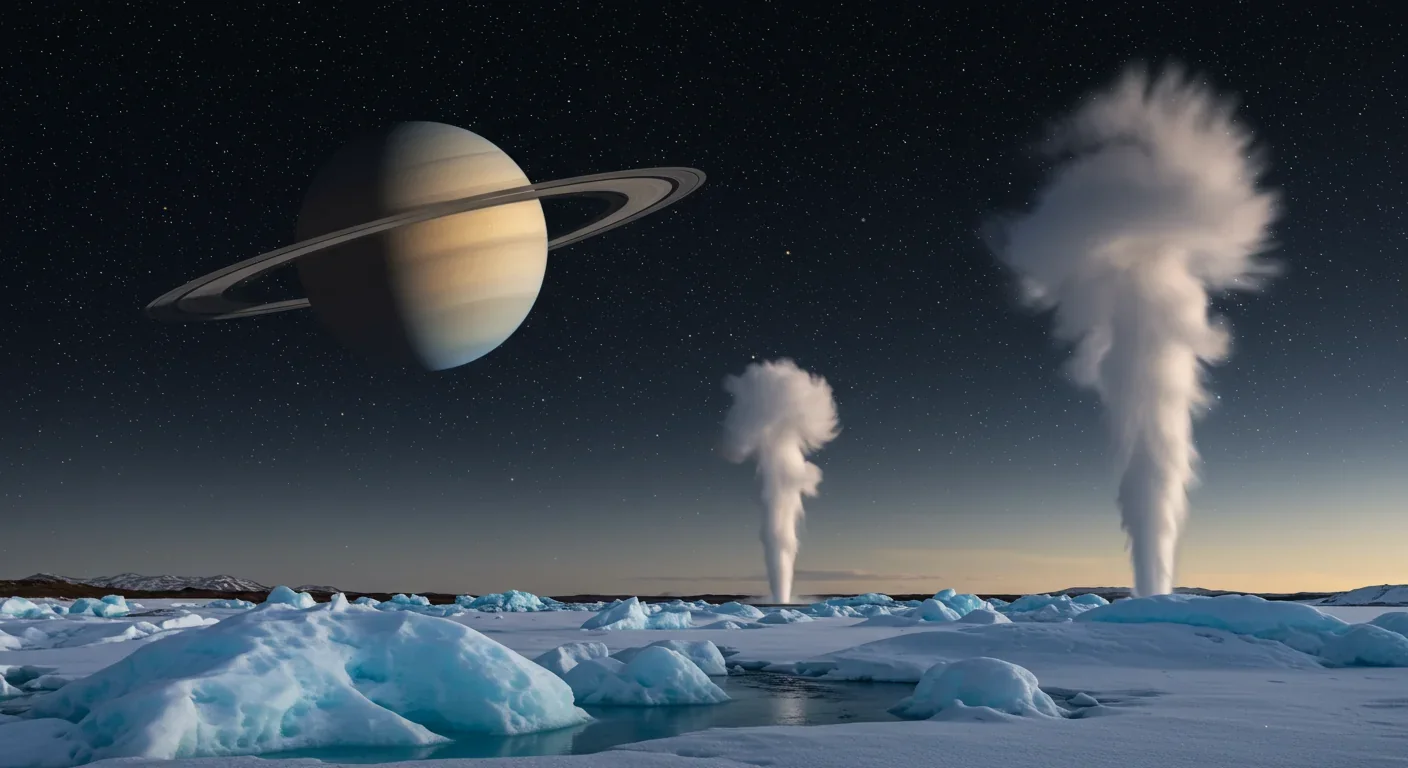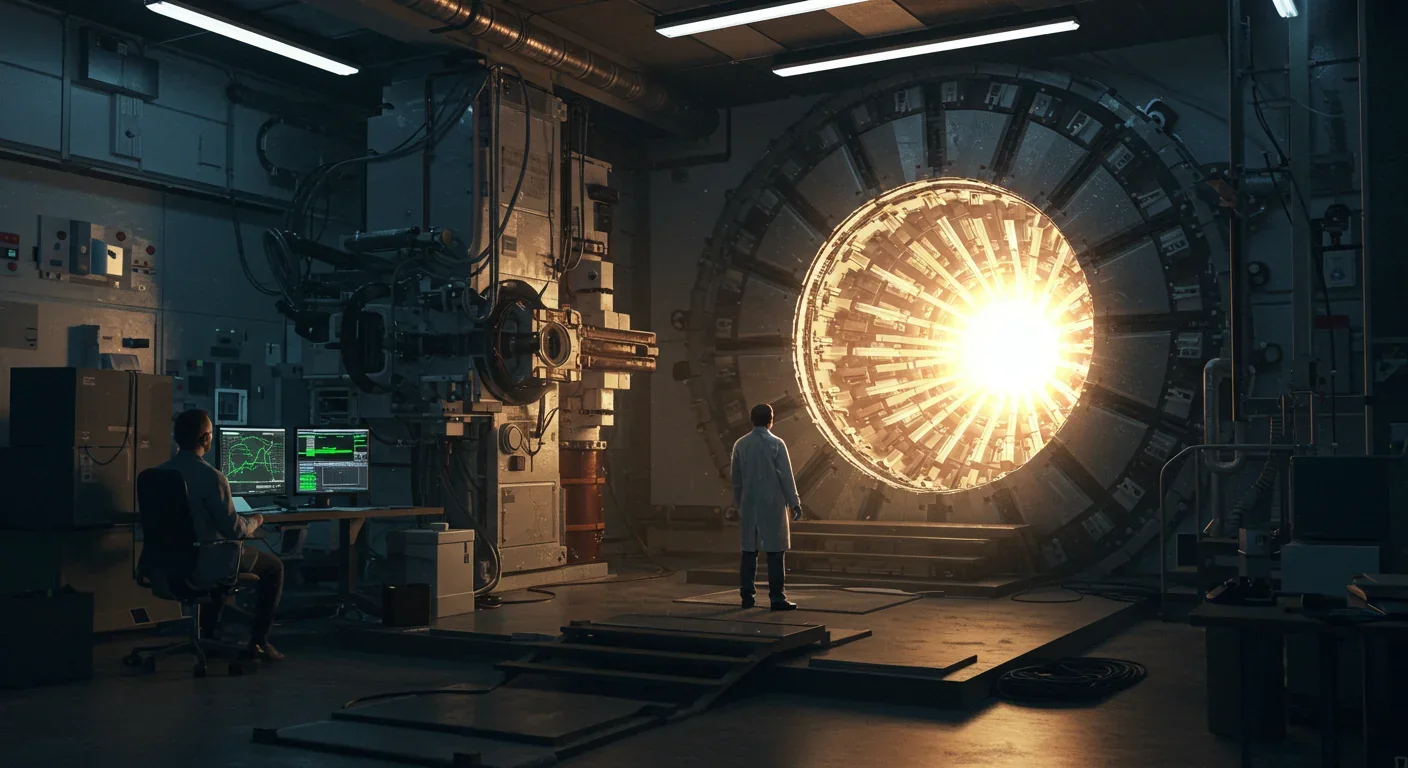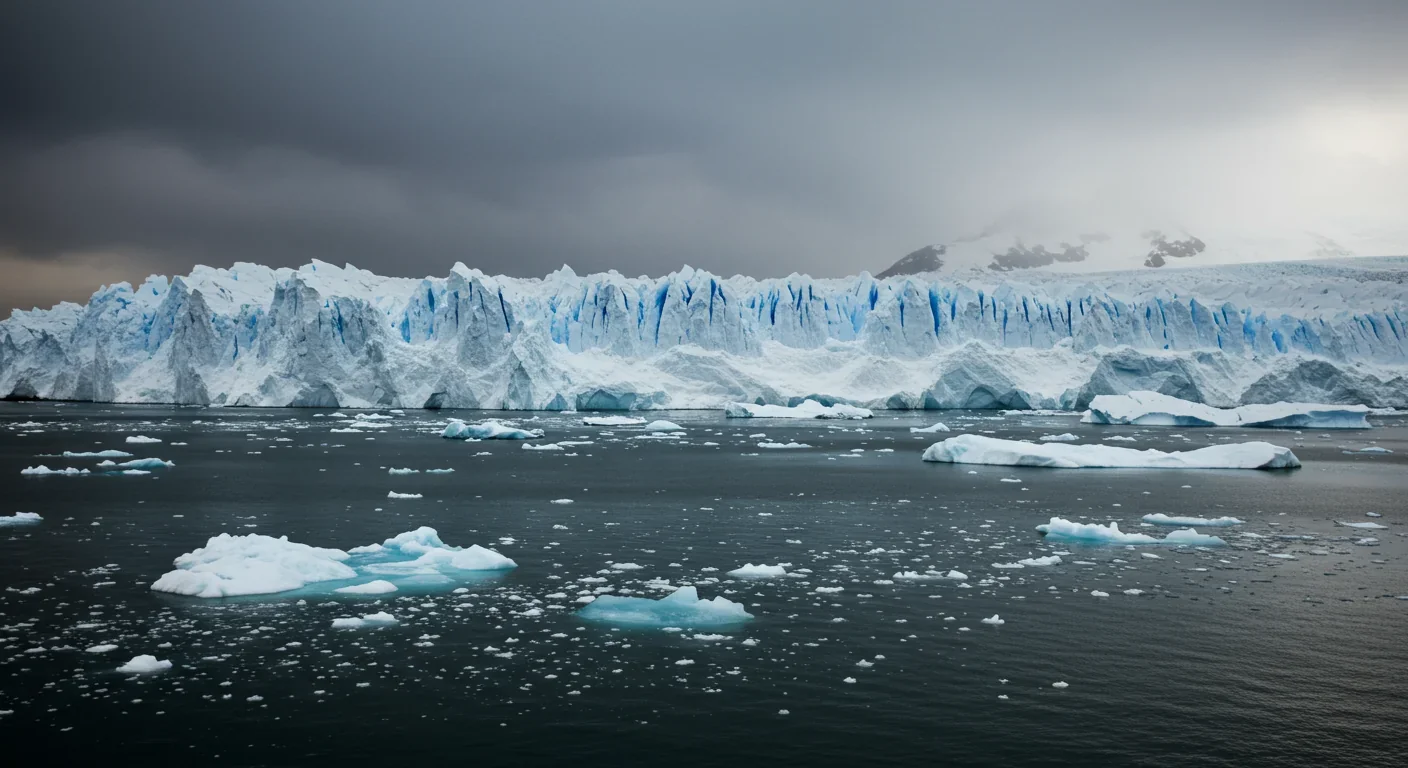Ice Volcanoes on Alien Oceans Could Harbor Life

TL;DR: Wormholes collapse almost instantly due to fundamental instabilities and require exotic matter with negative energy density in quantities exceeding the observable universe's mass, making traversable wormholes practically impossible despite being mathematically valid solutions to Einstein's equations.

Imagine stepping through a tunnel in space and emerging light-years away, bypassing the ordinary speed limit of the universe. It's a seductive idea that's captivated scientists and science fiction writers for nearly a century. But there's a problem, and it's not the one you might think.
Wormholes don't fail because we lack the technology to build them. They fail because of something far more fundamental: the universe itself won't let them exist for more than an instant.
When Albert Einstein and Nathan Rosen first described what we now call wormholes in 1935, they weren't trying to invent cosmic shortcuts. They were exploring the mathematics of general relativity, and the equations simply spat out these strange tunnel-like solutions. The Einstein-Rosen bridge, as it was originally called, emerged naturally from the math—a perfectly valid solution to Einstein's field equations.
There was just one catch: the bridge collapses faster than light can cross it.
Think about that for a moment. The very structure that's supposed to let you cheat the speed of light can't even survive long enough for light itself to traverse it. It's like discovering the blueprint for a perfect bridge that disintegrates the instant you step on it.
For decades, physicists treated wormholes as mathematical curiosities, interesting but irrelevant. Then in 1988, Kip Thorne and his colleagues asked a different question: what would it take to actually keep one open?
The answer turned out to be exotic matter—and not the fun kind of exotic. We're talking about matter with negative energy density, something that pushes instead of pulls, that falls up instead of down. It's the physics equivalent of antimatter, but weirder.
Here's why wormholes need it: general relativity tells us that matter curves spacetime. Normal matter with positive energy creates the kind of curvature that makes things like planets and stars. But a wormhole throat needs to curve spacetime in the opposite direction—it needs to hold space open against its natural tendency to collapse.
That requires violating what physicists call the null energy condition, a fundamental rule that says energy density can never be negative along the path of a light ray. Traversable wormholes don't just bend this rule. They shatter it completely.
The quantities involved are staggering. To stabilize a human-sized wormhole—say, 200 meters across—you'd need exotic matter exceeding the mass of the observable universe. Even if you could somehow create negative energy, you'd need an impossible amount of it.
But wait, you might say. We've actually observed negative energy in the lab, haven't we?
You're thinking of the Casimir effect, and you're right. When two uncharged metal plates are placed incredibly close together in a vacuum—we're talking distances measured in micrometers—quantum fluctuations create a measurable attractive force between them. This force arises from negative energy density in the gap.
In 1997, physicist Steve Lamoreaux measured this force to within 5% of the theoretical prediction. It was real, repeatable, and unambiguous proof that negative energy exists.
So problem solved, right?

Not even close. The Casimir effect produces negative energy densities around 10^-7 Newtons per square meter at micrometer scales. A wormhole needs densities billions upon billions of times larger, sustained across distances measured in meters or kilometers. It's like trying to power a city with the static electricity from rubbing a balloon on your hair.
Even if you could somehow conjure up enough exotic matter, you'd still face the original problem: wormholes are catastrophically unstable.
Recent research has mapped out exactly how this instability plays out. Wormholes possess what's called an unstable radial mode—think of it as a vibration that grows exponentially rather than dying out. The throat doesn't just collapse; it does so with a timescale measured in fractions of a second for a human-scale wormhole.
Actually, calling it "fractions of a second" is generous. For many wormhole solutions, the collapse happens faster than light can cross the throat. The tunnel pinches off before a photon could make it from one end to the other.
There's a cruel irony here: the very feature that makes wormholes interesting—their ability to connect distant points in space—ensures they can't exist long enough to be useful.
Physicists haven't given up entirely, though. Some recent work explores whether quantum effects might stabilize wormholes in ways that classical physics can't.
In 2019, Daniel Jafferis and colleagues published research suggesting that quantum entanglement between particles on opposite sides of a wormhole might supply the negative energy needed to keep it open. It's an elegant idea that connects quantum mechanics to general relativity in unexpected ways.
But even this approach hits hard limits. Quantum field theory imposes what are called quantum inequalities—constraints that prevent negative energy from accumulating in large amounts or persisting for long times. You can borrow negative energy from the quantum vacuum, but you have to pay it back quickly, with interest.
Some researchers have explored charged wormholes as another possible route to stability. Adding electric charge to a wormhole doesn't eliminate the instability, but it can slow it down dramatically. By tuning the charge close to an extremal limit, the decay time can theoretically stretch from microseconds to years.
There's a catch, of course. These solutions still require exotic matter to violate energy conditions. And the engineering challenges of maintaining such extreme charge distributions would make building a particle accelerator look simple.
Other approaches try to avoid the exotic matter requirement altogether by changing the rules of the game.
Modified gravity theories—frameworks that tweak Einstein's equations in subtle ways—can sometimes produce wormhole solutions that satisfy energy conditions. In f(R, L_m) gravity, for instance, researchers have constructed models where the exotic matter requirement vanishes or becomes manageable.
Higher-dimensional theories offer another escape hatch. In Kaluza-Klein models with extra spatial dimensions, wormholes can sometimes satisfy energy conditions that would be violated in ordinary four-dimensional spacetime. The extra dimensions provide additional degrees of freedom that change the stability analysis.
Non-commutative geometry takes a different tack, replacing point-like singularities with smeared distributions. This mathematical trick can eliminate some pathologies and produce wormhole solutions free of curvature singularities.
But here's the thing: none of these approaches have been experimentally verified. We're not even sure the underlying theories are correct. They're mathematical playgrounds, not engineering blueprints.

Walk into any physics department and ask about traversable wormholes, and you'll get reactions ranging from polite skepticism to outright dismissal.
The consensus among most physicists is clear: wormholes are theoretically possible in the sense that they don't violate the mathematics of general relativity. But they're physically implausible because they require conditions we have no idea how to create and probably can't exist in nature.
Kip Thorne himself, who helped revive interest in traversable wormholes, has emphasized their speculative nature. They're useful as thought experiments for exploring the limits of general relativity, but that doesn't make them practical.
Matt Visser and other wormhole researchers have cataloged the obstacles in exhaustive detail: exotic matter requirements, instabilities, quantum constraints, causality violations, and more. Each problem alone would be formidable. Together, they form an almost insurmountable barrier.
There's another reason to be skeptical of wormholes, one that makes physicists particularly uncomfortable: if traversable wormholes existed, they could potentially enable time travel.
The logic is straightforward. Take one end of a wormhole and accelerate it to near light speed, then bring it back. Due to time dilation, less time passes for the moving end than the stationary end. Now you have a tunnel connecting two different times.
Step through in one direction, and you go forward in time. Step through in the other direction, and you go backward.
This opens up all the classic time travel paradoxes: the grandfather paradox, causality violations, closed timelike curves. Some physicists, including Thorne, argue that quantum effects would prevent paradoxes by making wormhole time machines impossible. Others aren't so sure.
Either way, it's another mark against practical wormholes. The universe seems to have a deep aversion to causality violations, and wormholes threaten to create them.
So if wormholes are impossible, why do physicists keep studying them?
Because impossible things teach us about the possible. Wormholes sit at the intersection of general relativity, quantum mechanics, and thermodynamics—three pillars of modern physics that don't always play nicely together. By pushing these theories to their limits, we learn where they break down and where new physics might emerge.
The study of wormhole stability has led to insights about negative energy, quantum field theory in curved spacetime, and the structure of spacetime itself. These aren't just academic exercises. Understanding negative energy has applications in cosmology and quantum computing. Quantum field theory in curved spacetime helps us understand the early universe and black hole thermodynamics.
And maybe, just maybe, the equations are trying to tell us something we haven't figured out yet. Physics has a history of mathematical predictions that seemed absurd until they were confirmed: antimatter, black holes, gravitational waves, the expansion of the universe. Wormholes might join that list someday, though probably not in the way science fiction imagines.
Here's where we stand: wormholes emerge naturally from Einstein's equations, but staying open requires exotic matter we can't produce in useful quantities. Even if we could, quantum constraints and fundamental instabilities would likely prevent them from existing long enough to be traversable.
Modified gravity theories and quantum effects offer theoretical loopholes, but none have been verified experimentally. The engineering challenges would dwarf anything humanity has attempted.
Most physicists view traversable wormholes as theoretically fascinating but practically impossible with known physics. They're not ruling them out entirely, but they're not holding their breath either.
For now, wormholes remain where they've always been: in the realm of beautiful mathematics and speculative fiction. The fatal flaw isn't one we can engineer around. It's written into the fabric of spacetime itself.
If we want to travel between the stars, we'll probably need to find another way—one that doesn't require punching holes through reality and propping them open with matter that barely exists. The universe, it seems, doesn't give shortcuts easily.
And maybe that's for the best. Because if wormholes were easy to create and stabilize, we'd have to confront all those time travel paradoxes head-on. Some doors are better left closed, even theoretical ones.

Europa and Enceladus host ice volcanoes that erupt water and organic molecules from subsurface oceans into space, creating natural sampling opportunities for detecting extraterrestrial life. NASA missions are revolutionizing our search.

Loving-kindness meditation produces measurable brain changes in as little as eight weeks—increasing gray matter in empathy regions while reducing amygdala volume—and simultaneously lowers inflammatory markers like IL-6 and CRP by boosting vagal tone, making compassion practice a scientifically validated intervention with both neurological and immune system benefits.

Scientists propose deploying massive underwater curtains to block warm ocean currents from melting vulnerable glaciers. While the technology could theoretically slow ice sheet collapse, it faces enormous engineering challenges, ecological risks, and costs up to $500 billion—raising questions about whether it represents genuine climate action or a dangerous distraction from emissions reduction.

Religious communities worldwide engage in painful rituals because suffering functions as an impossible-to-fake signal of commitment. These costly displays filter out free-riders, create physiological synchrony between participants, and forge intense social bonds through shared sacrifice.

Scientists have discovered that plants generate electrical signals remarkably similar to nerve impulses, using calcium-based action potentials to coordinate growth, defend against threats, and communicate across their entire bodies without any nervous system—a finding that's revolutionizing agriculture and our understanding of plant intelligence.

Social media algorithms aren't just showing you content—they're reshaping your beliefs. New research reveals how recommendation systems push users toward extremism through engagement-driven feedback loops, exploiting psychological biases while gradually radicalizing worldviews.

Zero-knowledge proofs let you prove facts about yourself without revealing the underlying data, transforming digital privacy across identity verification, authentication, blockchain, healthcare, voting, and finance through cryptographic protocols that separate verification from disclosure.